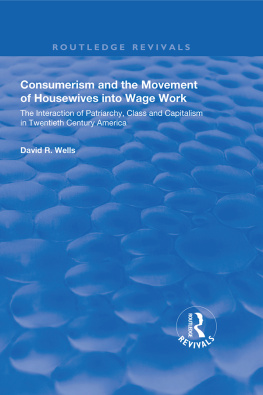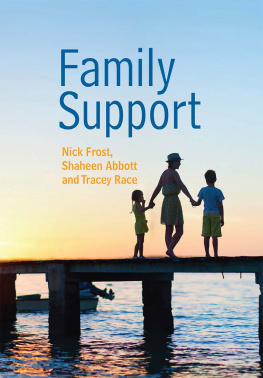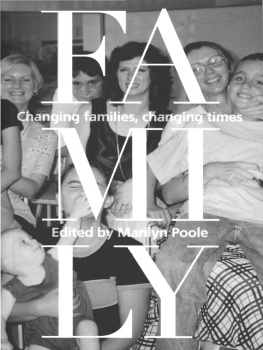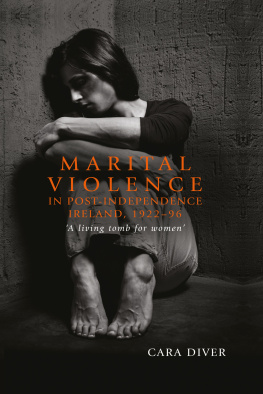To my family
and
all my other mentors
this book is lovingly dedicated
Married Cooperators
J. Don Bloom, BA, MPhil
First published 1997 by Ashgate Publishing
Reissued 2018 by Routledge
2 Park Square, Milton Park, Abingdon, Oxon, OX14 4RN
711 Third Avenue, New York, NY 10017
Routledge is an imprint of the Taylor & Francis Group, an informa business
Copyright J. Don Bloom 1997
All rights reserved. No part of this book may be reprinted or reproduced or utilised in any form or by any electronic, mechanical, or other means, now known or hereafter invented, including photocopying and recording, or in any information storage or retrieval system, without permission in writing from the publishers.
Notice:
Product or corporate names may be trademarks or registered trademarks, and are used only for identification and explanation without intent to infringe.
Publisher's Note
The publisher has gone to great lengths to ensure the quality of this reprint but points out that some imperfections in the original copies may be apparent.
Disclaimer
The publisher has made every effort to trace copyright holders and welcomes correspondence from those they have been unable to contact.
A Library of Congress record exists under LC control number: 97071454
ISBN 13: 978-1-138-32774-0 (hbk)
ISBN 13: 978-1-138-32776-4 (pbk)
ISBN 13: 978-0-429-44908-6 (ebk)
Margaret O'Brien
Professor of Family Studies
University of North London
When Don Bloom first approached me about his interest in researching couples who have to live apart some of the time because of their work commitments it was clear that he was a dedicated investigator of the topic. The fieldwork for this book took Don Bloom across the length and breadth of Britain interviewing mothers, fathers and children living in diverse settings. He has traced the complex patterns of family life that develop when one parent is away for significant periods of time; in particular the impact this has on marriage and parenthood.
Although marriage is a topic of intense media debate there are still relatively few empirical studies of it. The current book makes an important contribution to the field of family studies. By examining marriages and families that have to cope with an external stressor - unsocial work patterns - it has illuminated the nature of marriage itself. Bloom argues that co-operation in marriage is cemented by a glue of what he calls a 'congruence of constructs'. When couples display congruency in the domains of economic, emotional, intellectual, physical and social life, the marriage is more likely to survive the exigencies of external stress. This book includes fascinating case studies, comparing the wife's story, the husband's story and the child's story. The sensitive analysis demonstrates that the 'same' reality can create quite different accounts.
A unique book portraying how parents and children cope with the 'greedy' world of work. The volume will be of interest to academics and lay people who are concerned about the impact of work on family life.
I am especially grateful to Professor Margaret O'Brien of the University of North London, and to Dr S.D. Sclater and to other members of the Sociology staff of the University of East London who helped me in the initial stages of both the research and the writing up of the results.
Divorce rates have increased considerably over the last few decades. The number of single parent families has increased because of this and for other reasons as well. Much work and speculation is devoted to finding why people commit adultery (e.g. Lawson, 1990) and why marriages break down. The present study is concerned with the relationships within the family in order to understand what it is that holds families together as opposed to what it is that drives them apart. The technique used is to study families where one of the adults works away from home for a large part of each year, either in a series of short periods such as two weeks at home followed by two weeks away, or for longer periods at a time, perhaps even being away for the complete year. These family separations are not caused by familial discord, but are due to working conditions. Because they are not caused by discord I call the separations Non-discordant Marital Separations or NMS for short. These separations occur for a variety of reasons. Some jobs involve travelling or working in faraway places or in places where, for example, women are forbidden or where the local culture is uncongenial to most western women. The separations are considered here, but of greater concern are not only the feelings of the parties involved and the inter-relationships which hold the families together, but also the way the parties involved see the changes in the relationships and the relationships themselves. It is this intrafamilial environment and the reactions of the people involved which are the subject of the book.
The extent of NMS families has not been estimated in this country and to do this a technique based on sampling theory and proportionality was used. (The calculations on which the estimate are based will be found in do it demographically by using data from the regular decennial national census would be unlikely to give this kind of data; and even if it did, it would be out of date by the time it was published. The estimate made here gives the number of NMS families as being between 41,768 and 139,228 with a mean figure of 90,498; so that the actual number of people involved (i.e. two parents and some children per family) would be much greater. This represents an appreciable group of people.
To understand how the relationships within a family are illuminated or distorted through the absence of one of the adult dyad it seems reasonable to look at the factors which initially brought the adult dyad together. This I have done previously in a study on 'The Selection of Spouses, Cohabitees, and Lovers', (Bloom, 1991). Courting or newly-wed couples (including one homosexual couple) were interviewed and at the end of the interviews were asked to complete grids on the factors which disposed them to accept or reject possible partners. In addition fifty contributors to the lonely hearts column of a national magazine were asked to complete a short questionnaire and to give their own version of what they wanted in their partner. In that study, although the sample size was small, two sets of factors stood out. Firstly there were combinations and permutations of five pragmatic factors (economic, emotional, intellectual, physical, and social), which operated in all relationships no matter how brief nor how long lasting, and secondly in all long lasting relationships there was a considerable degree of congruence of what Schutz (Schutz, 1970) and the sociological group of phenomenologists call 'Natural Attitude' or what Kelly (Kelly, 1955) and the psychological group of the personal constructionist school call 'Personal Constructs'. What Bloom (Bloom, 1991) found was that all his dyads (i.e. his couples) had a lot in common with each other; they were brought up, perhaps, in a closed circle of attitudes from other countries, or they had started in a very demanding profession which imposed its own ethics, or had been brought up in a similar way in a similar family background. One factor which brought them together was that of companionability and that they laughed a lot together. Shared humour depends on shared outlook and has a cohesive effect on a group, and a dyad is just a small group (Contributors to Powell and Paton, 1988; Douglas, 1975; Dundes, 1971; Obrdlik; 1942). Companionability is also a reflection of shared outlook.









